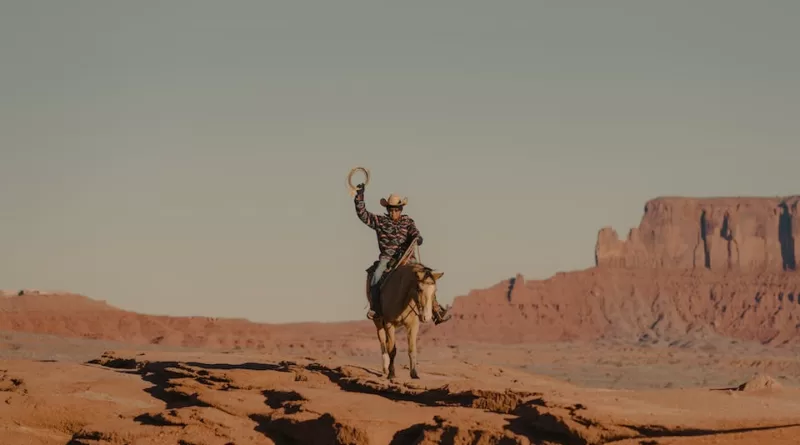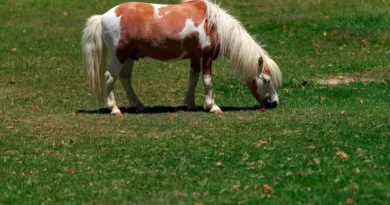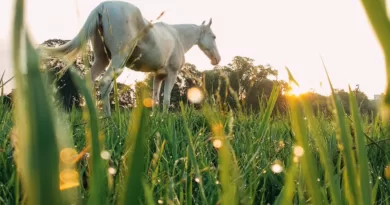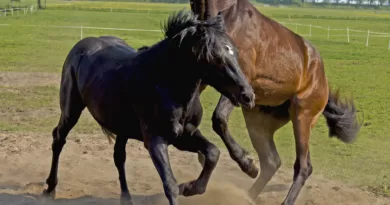What Is Horse Vaulting
The History of Horse Vaulting
Horse vaulting, the art of performing acrobatic and gymnastic movements on horseback, has a rich and fascinating history that stretches back thousands of years. While the exact origins of this equestrian sport are unclear, evidence suggests that horse vaulting was first practiced in ancient civilizations such as Greece and Rome. In these early times, horse vaulting was both a form of entertainment and a way to train soldiers in agility and balance. The skills and techniques that were developed during this period laid the foundation for the modern-day sport of horse vaulting.
Throughout history, horse vaulting has evolved and adapted to different cultures and eras. In medieval Europe, for example, horse vaulting was a popular form of entertainment during jousting tournaments and festivals. Brave and skilled athletes would showcase their strength and showmanship by performing daring acrobatic maneuvers on the backs of horses. As the centuries passed, horse vaulting transitioned from a practical skill for warfare to a competitive sport that combined artistry, athleticism, and horsemanship. Today, horse vaulting is recognized as an official sport by equestrian organizations worldwide and continues to captivate audiences with its beauty and complexity.
The Origins of Horse Vaulting
Horse vaulting traces its roots back thousands of years to ancient civilizations such as the Greeks and Romans, who used it as a method of training for their cavalry. The discipline gained popularity during the Middle Ages, particularly in Europe, where it became a staple in knightly education and horsemanship. As an equestrian sport, horse vaulting has evolved over time, incorporating elements from acrobatics and gymnastics. Today, it is recognized as a competitive sport in many countries around the world, with its own set of rules and regulations.
The origins of horse vaulting can also be seen in traditional circus performances, where skilled performers would showcase their acrobatic abilities on horseback. This aspect of horse vaulting has contributed to the development of specific techniques and moves, adding an artistic flair to the sport. Over time, horse vaulting has evolved into a unique blend of athleticism, balance, and precision, creating a captivating experience for both participants and spectators alike.
Understanding the Equipment Used in Horse Vaulting
Horse vaulting, a unique and dynamic equestrian sport, requires specialized equipment to ensure the safety and success of both the vaulter and the horse. One of the most important pieces of equipment used in horse vaulting is the vaulting surcingle. This padded and adjustable belt-like device is secured around the horse’s barrel, providing a stable and secure surface for the vaulter to perform their routines. The surcingle is equipped with handles on both sides, allowing the vaulter to maintain balance and control during their movements. Additionally, stirrups are attached to the surcingle, enabling the vaulter to maintain stability and support as they execute their intricate maneuvers. These stirrups are designed with safety in mind, often featuring non-slip treads and easy release mechanisms in the event of an emergency.
Another crucial piece of equipment in horse vaulting is the vaulting pad. This thickly cushioned pad sits on the horse’s back, directly under the surcingle, providing additional comfort and protection to the horse. Made from high-quality materials, such as foam or fleece, the vaulting pad helps to prevent pressure points and friction, ensuring the horse’s well-being throughout the vigorous vaulting exercises. Furthermore, the pad assists in distributing the vaulter’s weight evenly on the horse’s back, reducing any potential strain or discomfort. The vaulting pad is often designed to stay securely in place, thanks to its non-slip underside or straps that fasten it to the horse’s girth.
The Benefits of Horse Vaulting for Riders
Horse vaulting, as an equestrian sport, offers numerous benefits for riders. Firstly, it enhances balance and coordination. The dynamic nature of performing various movements on a moving horse forces riders to develop exceptional balance and coordination skills. This is particularly beneficial for individuals who struggle with body awareness or lack confidence in their physical abilities. Through horse vaulting, riders gain a greater sense of control and improve their overall body coordination.
In addition to physical benefits, horse vaulting also promotes mental well-being. The close bond formed between the horse and the rider can have a positive impact on the rider’s emotional state. Interacting with such a majestic animal allows riders to experience a sense of calm and serenity, reducing stress and anxiety. Moreover, the focus required during vaulting routines enhances concentration and instills a sense of discipline in riders. These mental benefits can be carried over into other areas of life, such as school, work, or personal relationships.
The Different Levels of Horse Vaulting Competitions
Horse vaulting competitions are divided into different levels to accommodate participants of varying skills and experience. These levels are designed to ensure fair and competitive play while promoting growth and development in the sport.
At the beginner level, participants are introduced to the fundamental techniques of horse vaulting. They learn basic moves such as standing on the horse’s back, kneeling, and sitting, all while the horse is kept at a controlled walking pace. The emphasis at this level is on building a strong foundation of balance, coordination, and trust between the vaulter and the horse. As participants progress, they move on to more advanced levels, where they demonstrate increased difficulty and complexity in their routines. These levels may involve faster gaits, such as trotting and cantering, as well as the incorporation of additional elements like gymnastic flips and partner work.
Safety Measures and Precautions in Horse Vaulting
Horse vaulting, although an exhilarating and dynamic sport, requires strict adherence to safety measures and precautions to ensure the well-being of both the vaulter and the horse. One of the most basic safety measures is the use of appropriate safety gear. Vaulters must wear helmets, body protectors, and suitable footwear to minimize the risk of injury in case of a fall or accident. Additionally, the horse should be equipped with properly fitting protective boots to safeguard its legs from any potential impact.
Another essential precaution in horse vaulting is the careful selection and training of the horse. The chosen horse must possess a calm and trustworthy temperament, capable of handling the various movements and actions involved in vaulting. Proper training and conditioning of the horse are crucial to ensure its physical fitness and ability to perform safely. Vaulters should also be knowledgeable about the specific requirements of their horse, including any potential health issues or sensitivities, to avoid compromising the animal’s well-being during training or performance.
By prioritizing safety measures and precautions, horse vaulters can enjoy this unique sport with confidence, knowing that the necessary steps have been taken to mitigate risks and protect both themselves and their equine partners.
• Use appropriate safety gear such as helmets, body protectors, and suitable footwear
• Equip the horse with properly fitting protective boots to safeguard its legs
• Carefully select a horse with a calm and trustworthy temperament for vaulting
• Ensure proper training and conditioning of the horse for physical fitness and safe performance
• Be knowledgeable about the specific requirements and health issues of the horse
• Prioritize safety measures to mitigate risks for both vaulters and horses
How to Get Started with Horse Vaulting
To embark on a journey of horse vaulting, aspiring individuals must first find a reputable equestrian facility that offers training in this thrilling sport. It is essential to choose an establishment with experienced coaches who can provide proper guidance and instruction. Before commencing training, it is recommended to have a basic understanding of horse care and handling. This ensures that participants are equipped with the necessary knowledge to maintain a safe and enjoyable environment for both horse and rider. Additionally, it is important to inform the coaches about any previous experience, if any, in equestrian activities, as this will help in determining the appropriate starting point for training.
Developing the Necessary Skills for Horse Vaulting
To become proficient in horse vaulting, individuals must develop a specific set of skills that allow them to perform various movements and routines while on horseback. One of the most crucial skills to master is balance. Maintaining a stable and centered position on the horse’s back is essential, as it enables vaulters to execute their movements smoothly and with precision. Developing a strong core and lower body strength is also vital, as these muscles help vaulters maintain their balance and control their movements while in motion.
In addition to balance and strength, flexibility is another key skill necessary for horse vaulting. Vaulters need to have a wide range of motion in their joints and muscles to perform the dynamic movements required in this discipline. Stretching exercises and regular training can help improve flexibility and prevent injuries. Timing and coordination are also vital skills, as vaulters must synchronize their movements with those of the horse to achieve seamless performances. Proper timing between the vaulter’s jumps, flips, and rotations must be perfectly aligned with the horse’s gait and rhythm to create a harmonious display of skill and athleticism.
The Role of the Horse in Horse Vaulting
Horse vaulting is a unique equestrian sport that combines elements of acrobatics, gymnastics, and dance on the back of a moving horse. The role of the horse in horse vaulting is absolutely essential, as they are not only the platform on which the vaulter performs their impressive movements but also an integral part of the overall performance.
The horse serves as the vaulter’s trusted partner, providing a steady and reliable base for their routines. A good vaulting horse possesses certain qualities, such as a calm and responsive nature, a smooth gait, and the ability to maintain a consistent rhythm. These attributes allow the horse to effectively assist the vaulter in executing their movements with precision and control. Furthermore, the horse’s strength and athleticism contribute to the spectacle of the performance, adding an additional element of grace and power to the overall routine.
Horse Vaulting as a Form of Artistic Expression
Horse vaulting is not only a sport or a physical activity but also a form of artistic expression. It combines the beauty and grace of human movement with the power and elegance of the horse. The harmonious interaction between the vaulter and the horse creates a mesmerizing spectacle for spectators to behold.
In horse vaulting, every movement, from the most intricate to the simplest, is carefully choreographed to music. Vaulters perform a series of acrobatic maneuvers, such as flips, twists, and handstands, all while balancing on the back of a moving horse. The precision and synchronization required in executing these movements add an artistic element to the sport. It is a captivating display of agility, strength, and poise, showcasing the deep bond between the vaulter, the horse, and the music that guides their performance.
What is horse vaulting?
Horse vaulting is a unique sport that combines gymnastics and dance on horseback. It involves performing a series of movements, such as acrobatics, jumps, and balances, while the horse is moving in a controlled manner.
What is the history of horse vaulting?
Horse vaulting has a long history, dating back to ancient Roman times. It was initially developed as a training method for cavalry riders, but over time, it evolved into a standalone sport and artistic form of expression.
How did horse vaulting originate?
Horse vaulting originated from the training exercises performed by Roman cavalry riders. These exercises included various movements on horseback, which eventually developed into the sport we know today.
What equipment is used in horse vaulting?
The equipment used in horse vaulting includes a vaulting surcingle (a padded belt), a vaulting pad or mat, and sometimes side reins or a cavesson to help control the horse’s head position. Additionally, vaulters may wear special shoes or grips for better traction on the horse.
What are the benefits of horse vaulting for riders?
Horse vaulting offers several benefits for riders, including improved balance, coordination, strength, and flexibility. It also enhances trust and communication between the vaulter and the horse, as well as providing a sense of teamwork and accomplishment.
What are the different levels of horse vaulting competitions?
Horse vaulting competitions are divided into several levels, including individual, pas de deux (pairs), and team events. Each level has different difficulty requirements and may include compulsory and freestyle routines.
What safety measures and precautions should be taken in horse vaulting?
Safety is paramount in horse vaulting. Some precautions include using properly fitting equipment, practicing under the supervision of trained professionals, warming up and stretching before each session, and ensuring the horse is well-trained and cared for.
How can I get started with horse vaulting?
To get started with horse vaulting, you can look for local vaulting clubs or equestrian centers that offer vaulting programs. They can provide lessons, access to trained horses, and guidance on proper technique and safety.
What skills are necessary for horse vaulting?
Horse vaulting requires a combination of physical and mental skills. Some important skills include balance, coordination, flexibility, strength, and the ability to work harmoniously with the horse.
How does the horse contribute to horse vaulting as an art form?
The horse is an integral part of horse vaulting as an art form. It provides the necessary platform and movement for the vaulter’s artistic expression, and the partnership between the vaulter and the horse adds grace, beauty, and a sense of harmony to the performance.




